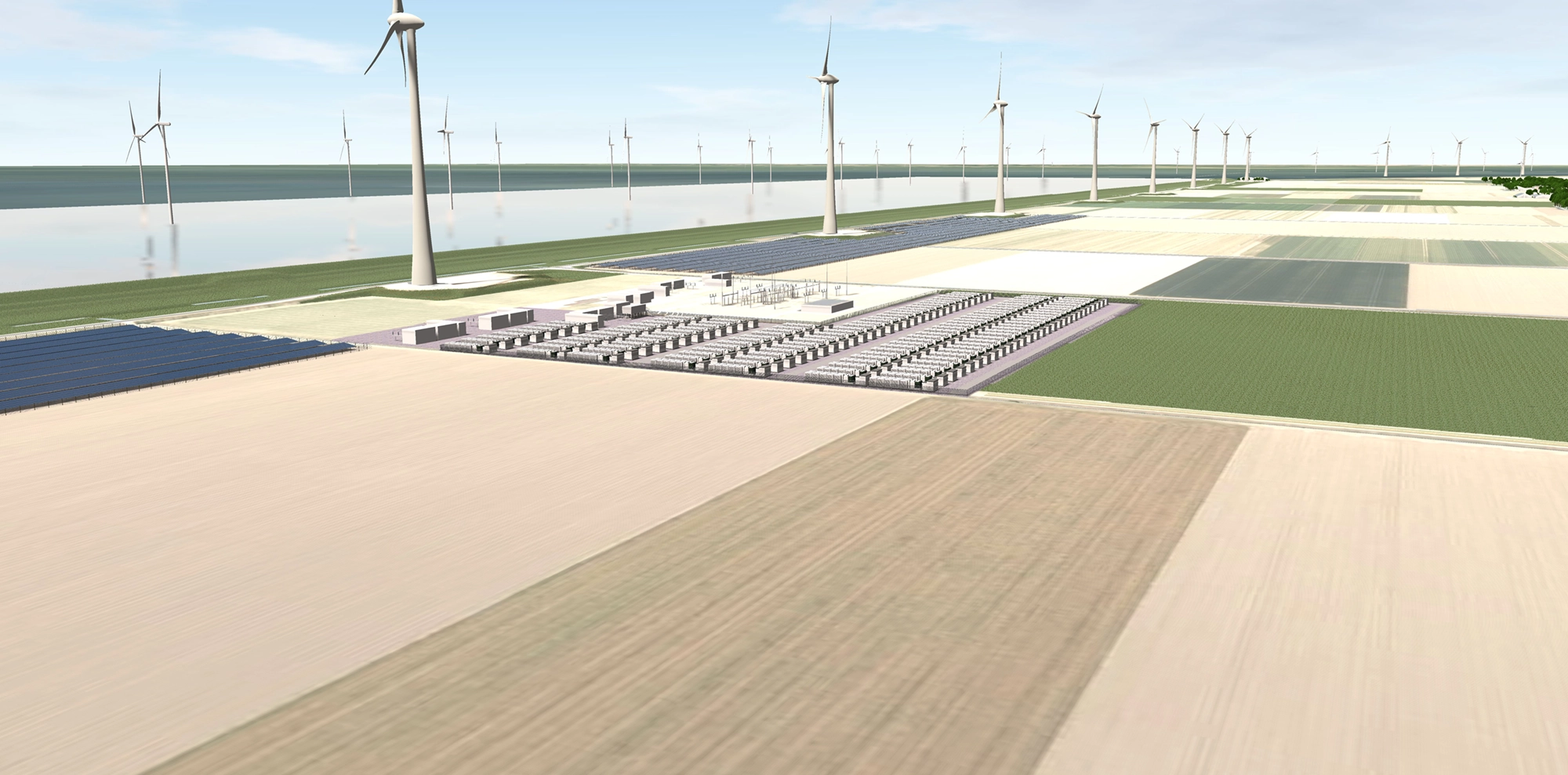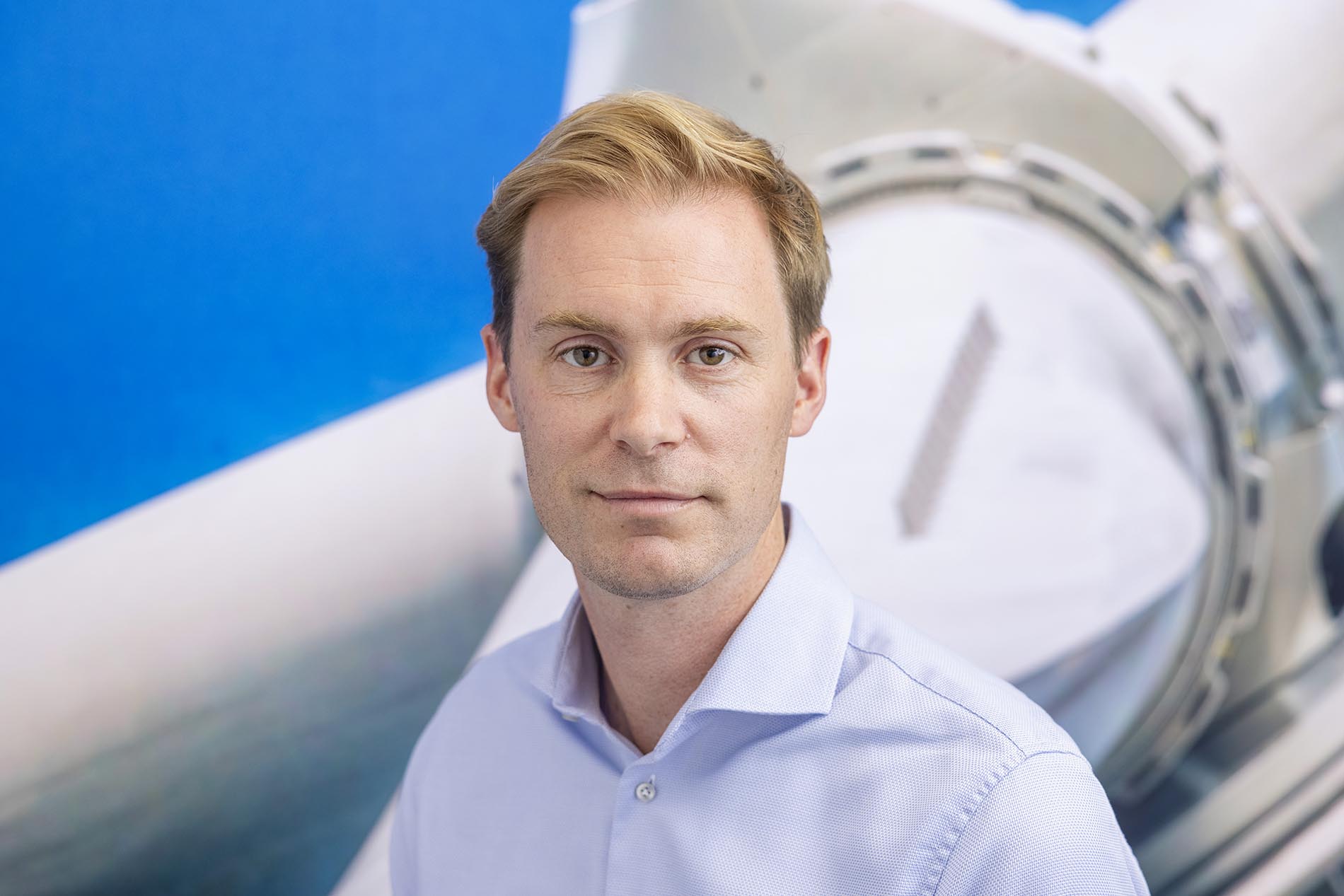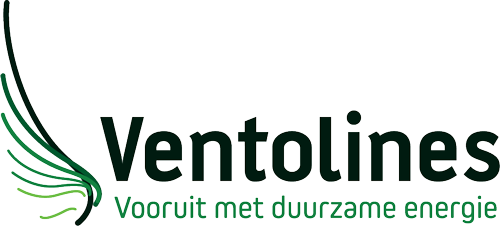“We have passed the tipping point” – Rens Savenije explains how we make large-scale batteries profitable

Batteries are all-rounders. They create flexibility on the electricity grid and in the energy market. They can help solve grid congestion and contribute to security of supply. In addition, they make room for the growth of wind and solar energy. However, it is still a challenge to make battery projects profitable. Rens Savenije, business lead system integration, explains how Ventolines does arrive at a positive business case.
Executive summary
- System integration concerns all the changes required to integrate wind and solar energy on a large scale.
- Batteries are on the rise and will play a crucial role in any future energy system.
- The grid is locked, and batteries can contribute to the solution.
- The business case for batteries is particularly attractive when combined with wind farms and solar farms.
System integration
Rens Savenije started working as business lead for system integration at Ventolines five years ago. What does that mean exactly? Savenije: “System integration is about the question: what does the energy system of the future look like? And more concretely: how can we fit technologies such as wind and solar into the system?”
“System integration considers, among other things, how industry must use electricity when energy from the wind and sun is available,” says Savenije. “We are moving from a supply-driven energy system to a demand-driven system. Grid operators must invest heavily in a stronger national and European electricity grid. And energy storage is also part of system integration, preferably integrated in a wind or solar park.”
Why batteries are now on the rise
In April this year, Rens Savenije was interviewed about the “flood of requests” for batteries from the grid operators. This enormous increase did not surprise Savenije: “I started as business lead for system integration at Ventolines five years ago. There was very little attention paid to battery storage in the Netherlands at the time. We were pioneering the first projects. When the war broke out in Ukraine, electricity prices skyrocketed. The volatility in the markets was enormous. In that year you could make a lot of money with energy storage. And this woke a lot of people up.”
“We were involved in the very first large battery in the Netherlands in 2018. But we consider that small fry now.”
– Rens Savenije, business lead system integration at Ventolines
Battery projects currently underway at Ventolines
“We have now passed the tipping point and more and more customers are interested in investing in energy storage,” says Savenije. Ventolines was involved in several of the Netherlands’ first major battery projects. The very first was for Greenchoice (“Megabattery at the Rotterdam port wind farm”, AD, 2018). Savenije: “But we consider that small fry now. That one was 10 Megawatts. We are now involved in projects up to 500 MW. For example, 250 MW batteries will be installed at the Westermeerdijk high-voltage station in the Noordoostpolder. This can store 650,000 Megawatt hours of electricity annually. This is comparable to the consumption of 200,000 households.”
From development to contracting, construction and management
The projects currently running are largely in the development phase. This is logical because many of these projects started at the time of the price increases in 2022. Savenije: “We are now in consultation with the authorities about the permits for these initiatives. We have also taken projects to the next stage already: a grid connection and a land position and/or the prospect of a permit. This gives customers some certainty, which means we can start the contracting; the purchase of all the installations. In the meantime, we can start preparing for construction and management.”
“Batteries are currently still seen as consumers on the grid, while they are actually an indispensable link. They help solve grid congestion.
– Rens Savenije, business lead system integration at Ventolines
Transport costs hold back the business case
As we have shown, there are quite a few battery projects under development and many investors. But they are still taking a high risk. There is no business case yet for a stand-alone battery. Rens Savenije explains why: “It’s all about the transport costs: costs charged by the grid operator for withdrawing electricity from the grid. The rate has increased fivefold at TenneT in recent years. But only the end user pays the costs for this.
The grid is creaking at the seams
And what is so contradictory according to Savenije and many of his co-professionals: “Batteries are still seen as consumers at the moment. But they actually form an indispensable link and can help solve the problem of grid congestion and imbalance. TenneT says that 9 Gigawatts of adjustable power will be needed in the grid by 2030. Otherwise the high standard of supply security we are used to in the Netherlands will no longer be guaranteed. If we really want to achieve that, system batteries must be introduced. The grid is already creaking at the seams. And that’s why it’s so important for something to be done.”
The Netherlands is falling behind
The implementation of battery projects is already much further along in other Western European countries. Savenije: “Almost all the European countries around us have introduced an exemption on transport costs for batteries. As such, we are seeing one major project after another being announced in Belgium, Germany and the United Kingdom. The Netherlands is really lagging behind.”
A recent study found that the cost of damage caused by not implementing batteries on the grid is much greater than the return on transport costs. This is mainly because we will increasingly have to deal with power outages, which in turn cause defects in equipment. (Research agency Ecorys: “Large batteries can save Dutch society € 2 billion every year.’)
“The electrification of industry is extremely important for the energy transition. But the grid is locked, and it’s holding back economic growth.”
– Rens Savenije, business lead system integration at Ventolines
The grid is locked, and it’s holding back economic growth
Industry in particular is noticing the consequences of grid congestion. Savenije: “The electrification of industry is extremely important for the energy transition. But the grid is locked, and it’s holding back economic growth and sustainable development. Business parks cannot currently switch from gas to their own solar roof using a heat pump because the grid is too heavily loaded. And that in turn contributes to the fact that companies cannot establish themselves and cannot expand.”
Profitable business case for batteries
Nevertheless, Ventolines has developed a solution to make the business case for a battery profitable. Savenije: “For example, we combine them with a wind farm. We do not connect the batteries directly to the grid, but install them “behind the meter”. The battery only ever receives its charge from the wind farm. When there is no wind, you lose income from the battery because you cannot charge it. But you also avoid high transport costs. There is certainly an optimum situation somewhere in there.”
Complex calculation models
“We devise trading strategies and size the battery in such a way that the income you lose when you are unable to charge is lower than the transport costs. I’ve been working on it for five years. We can use these complex calculation models to advise our customers when considering a battery. And this means we can arrive at a business case that works.”
Cable pooling on industrial estates
We also assist industrial and business parks in sharing grid connections through a legal structure: “virtual cable pooling”. Savenije: “We help these customers conclude smart contracts with the grid operator. All the companies on such a site can then join together to make optimal use of sun, wind and batteries via an energy hub. We create what we call a virtual cable pool and coordinate the use and generation of energy on the site. The result is that the parties can still expand and become more sustainable.”
“Our legal department has made a model cable pooling agreement publicly available. We really do it out of conviction.”
– Rens Savenije, business lead system integration at Ventolines
Cable pooling
At Ventolines we provide all the services related to sustainable energy, from A to Z. This has a number of unique advantages, especially when it comes to system integration. Savenije: “We have a very strong legal department that, for example, has developed a model contract for cable pooling; sharing grid capacity for wind, solar and batteries. Something like that requires a lot of agreements, especially when different owners are involved.” The model agreement ensures we can quickly draw up all the legal agreements for our customers.
Model contract drives the energy transition forward
Our lawyers have developed the model contract in collaboration with Invest NL and the trade association. Savenije: “We have made the model agreement publicly available. We really do it out of conviction, to accelerate the energy transition. Many parties cannot afford such a contract, even though they need it.”
“We think about the end picture for the customer during all the phases. This is only possible if you have all the services in-house.” ”
– Rens Savenije, business lead system integration at Ventolines
Integrated approach gives customers room for negotiation
Customers also benefit from our integrated approach in the permit procedure, says Savenije. “What many customers encounter is that you have to apply for a building permit for a battery. To do this you need to know exactly what the battery looks like, and this goes down to the masonry joints. This forces customers to choose a specific battery early on. We therefore write the permit with sufficient information for the municipality but still give our customers options. Without it, you would be stuck with one supplier and no room for negotiation.”
“We like to keep that option open,” says Savenije. “We do not think it is desirable to choose a supplier too early. We involve people who normally would not yet be involved in the permit phase. Specialists in construction, for example. “We think about the end picture for the customer during all the phases. This is only possible if you have all the services in-house.”
Get to know Ventolines
Have you been energised by the possibilities that Ventolines is creating in battery projects? Please feel free to contact us to exchange ideas. E-mail one of our experts, or call Ventolines. A short video meeting to get to know Rens or one of the other Ventolines specialists is also possible.
Energy Storage Event
Or meet Rens Savenije at the Energy Storage Event in de Jaarbeurs in Utrecht on 7 December 2023. He is one of the speakers.
Services
Ventolines has the in-house expertise to manage all aspects of your sustainable energy project. From feasibility study to construction, and from contracting to asset management. Battery projects mainly concern:
Development of sketches
and studies to feasibility
Legal advice about
all aspects of new energy
Contracting advice
and integrated strategies


